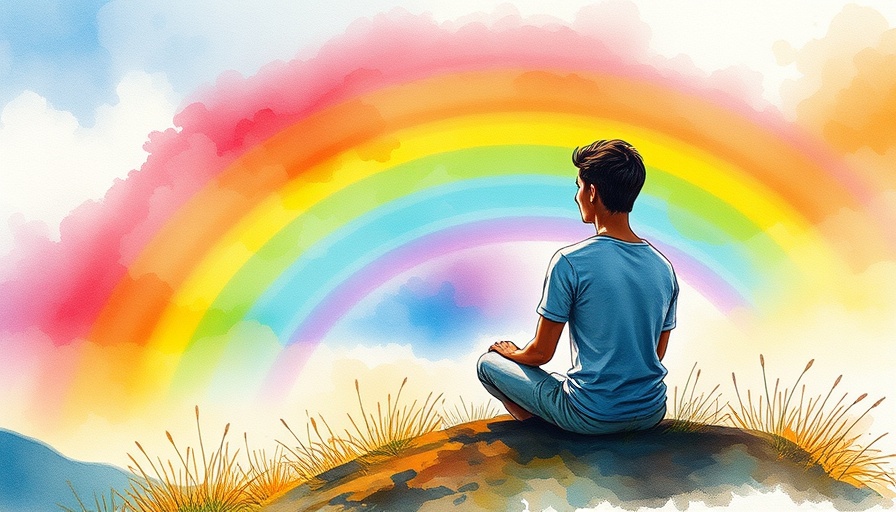
Overcoming Overthinking: A Journey to Mental Freedom
As we navigate through life, many of us can relate to the feeling of being trapped in the suffocating cycle of overthinking. It can manifest as replaying past mistakes or worrying incessantly about future uncertainties, but there’s a path toward liberation. Drawing from the reflections of former overthinkers and valuable psychological insights, let's explore how to break free from the shackles of overthinking and discover the art of really living.
The Anxiety of Letting Go: A Personal Transformation
In a powerful narrative shared by a former overthinker, we find an unforgettable turning point marked by their last day of school—a day not just signaling an end, but also kicking off a wave of poignant memories and emotional turbulence. This experience resonates with many, as we often cling to the familiar out of fear of the unknown. Like physical hoarding, mental hoarding can anchor us in nostalgia, rendering us unable to embrace new experiences, happiness, or connections. It was during a morning run, amidst a flurry of regrets and hopeful reflections, that the realization dawned: every ending bears the promise of new beginnings.
Practical Techniques for Letting Go
Learning to let go starts with actionable steps aimed at training our minds to recognize the futility of holding onto what no longer serves us. Common techniques include:
- Journaling: Writing down worries and memories can create a physical manifestation of your thoughts, making it easier to release them.
- Mindfulness Practices: Techniques such as meditation and yoga foster a profound awareness of the present moment, guiding you to acknowledge your thoughts without judgment.
- Physical Movement: The power of movement is transformative. Engage in activities like running, dancing, or martial arts to channel pent-up emotions and stress into motion.
- Seeking Closure: Whether it's addressing past relationships or unresolved issues, pursuing closure can enable emotional release and foster future growth.
Building Resilience Through Community Connection
Another core lesson from the journey of letting go is the vital role of interpersonal connections. Engaging with supportive communities helps alleviate feelings of isolation and anxiety that often accompany overthinking. By sharing experiences, seeking advice, and validating each other's struggles, we not only strengthen our bonds but also construct frameworks for resilience together. Online platforms and local support groups have made it more accessible than ever to connect with like-minded individuals who can inspire and motivate us toward a more balanced life.
Future Predictions: Embracing the Impermanence of Life
As society progresses, there is growing awareness of the importance of mental well-being. Individuals are beginning to realize that detachment from the past and apprehension about the future can impede personal growth. The lessons from former overthinkers highlight a crucial truth: the ability to embrace life’s uncertainties is essential to forging a meaningful existence. Educational initiatives focusing on emotional intelligence are increasingly prevalent, encouraging younger generations to adopt healthier mindsets.
Taking Action: Steps Toward a Balanced Life
In order to truly start living rather than merely existing, it’s essential to take actionable steps toward change. Here’s how:
- Identify Triggers: Recognize what prompts your overthinking and develop strategies to navigate these triggers.
- Practice Gratitude: Daily gratitude exercises can shift your perspective and encourage a more positive outlook on life.
- Set Realistic Goals: Aim for progress rather than perfection. Set small, achievable goals that foster a sense of accomplishment.
Inspiration from Those Who’ve Overcome
Many former overthinkers have emerged victorious, often sharing their stories to uplift others. Their journeys remind us that transitioning from a state of anxiety to one of fulfillment is possible. The wise words of Buddha resonate here: “Rule your mind, or it will rule you.” Overcoming the mental barriers we establish is a powerful testament to the human spirit and its ability to adapt and flourish.
As you embark on your journey to liberation from overthinking, remember that it’s a continuous journey filled with opportunities for growth, joy, and connection. Letting go is not merely a one-time act but a lifelong practice that opens the door to a life well-lived.
If you feel inspired to embrace change or seek more actionable insights on mental well-being, engage with communities that uplift and motivate you. Remember, you’re not alone in this; the journey toward a balanced lifestyle begins with just one step.
 Add Row
Add Row  Add
Add 




Write A Comment